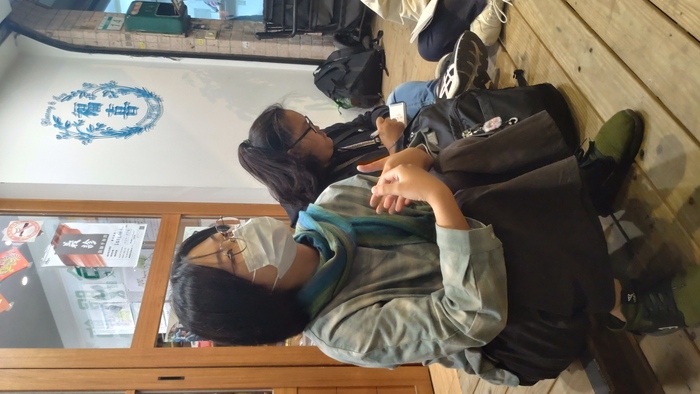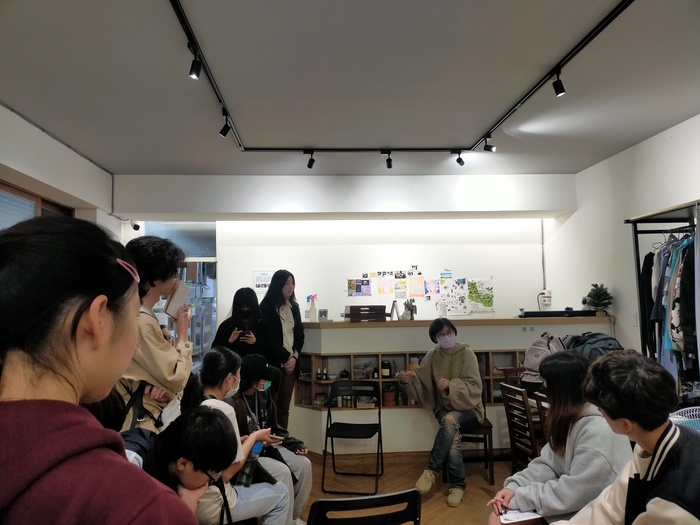Field Survey ~ A Glimpse of Fuxi Living Room Course


Field Survey ~ A Glimpse of Fuxi Living Room Course
Author/ Hsu Kai-wei
The theme of this semester's (112-1) "Field Survey" course is "The Other in the City." On the first day of Taipei's off-campus teaching (11/24), after gathering at the Wanhua Station, Teacher Qiongwen led the whole class on a walk to "Fuxi Living Room," located in a noisy alley beside Mangka Boulevard. The predecessor of this living room was the Wanderer's Cafeteria of Mang Cao Xin Association. Originally set up in 2018 as a small stall in the Raohe Street Night Market to provide employment training for the homeless, it was later impacted by the pandemic. Mang Cao Xin reconsidered its training and support model for the homeless. In 2021, they chose a new space in Mangka, opening it as a shared dining space for the urban homeless.
The entrance of the living room features an elegant wall, with a small wooden terrace outside the door. The manager explained that this was to allow the community friends receiving meal services to feel a warm sense of belonging when picking up their meals. This is just one part of the heartwarming planning of the living room. With detailed explanations from the manager and social workers, we understand the various difficulties and setbacks faced by the homeless, people with disabilities, or others who wander due to special circumstances. The establishment of Fuxi Living Room aims to help the homeless gradually readjust to social interaction through employment training, life courses, and resource matching. Therefore, the manager and social workers of the living room arrange for homeless people who are willing to work to participate in the process of meal packaging, heating, and distribution, or to organize materials together. Additionally, they also provide diverse services such as legal consultations and traditional Chinese medicine clinics to support the living needs of the homeless.
In fact, the atmosphere created in this space provides support for the homeless beyond the material level. For example, the manager set up a notice board in one corner of the living room, where homeless individuals can share their creative works alongside textual prompts and informational notices. We saw two quite imaginative pieces displayed on the wall. The manager told us that these were created by a homeless person during their time in prison, and they were given to the living room as a gift because of the support received. This shows us that positive connections between people can bring warmth to this harsh and cruel society.
During this institutional visit, our group of over forty people split into two groups, listening respectively to the explanations of the manager and social workers inside the living room and on the terrace. The clean and tidy living room in the bustling alley seems to signify an immersive relationship building. Here, apart from the city's hustle and bustle, a space is created for the homeless to share and support each other. When "The Other in the City" faces the cold social exclusion, the small living room in a corner of Mangka alley accompanies the homeless on their independent journey, providing a safe corner for them to rest assured.
